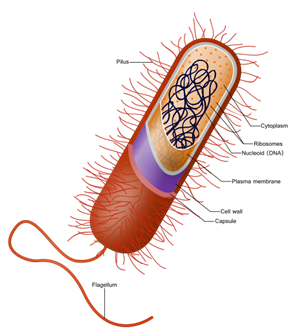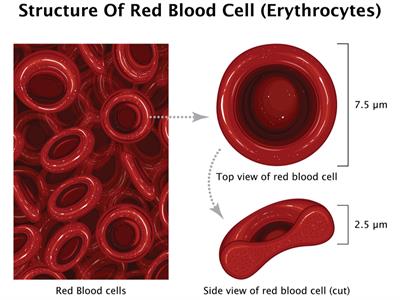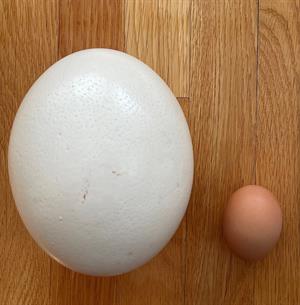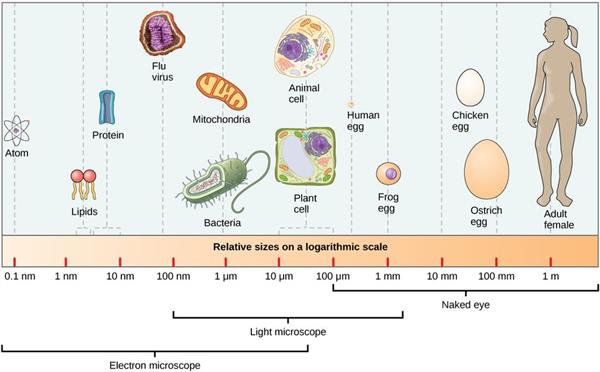
PUMPA - SMART LEARNING
எங்கள் ஆசிரியர்களுடன் 1-ஆன்-1 ஆலோசனை நேரத்தைப் பெறுங்கள். டாப்பர் ஆவதற்கு நாங்கள் பயிற்சி அளிப்போம்
Book Free DemoThe living organisms are millions in number. They are in different shapes and sizes and contain organs that also vary in shape, size and the number of cells.
The scientists observe the cells and their parts under the microscope in detail by staining them with dyes. The cells of the living organisms vary in shape, number and size.
Size of the cells:
In addition to the variation in shape, the cells also show a variation in size. The size of the cell may vary from a micrometer (a million of a metre) to as large as a few centimetres. The majority of the cells are microscopic in size and hence invisible to the naked eye. These cells can be seen only with a microscope.
A cell generally has a diameter of 0.01 mm approximately.
Bacteria is the smallest cell among the unicellular organisms. It is 0.01 to 0.5 micrometre in size.

Bacteria
The red blood cells are the smallest cells present in the human body.

Different sizes of the cells compared with RBC's
The egg of an ostrich is the largest cell. It measures 170\ mm ×130\ mm in size (millimetre: mm).

Comparison between Ostrich & Chicken egg
The size of the cells has no relation with the size and functioning of the animals and plants. Hence it is not necessary that the cells of the elephant be larger than that of the mouse.
The nerve cells are an example for this as to whether it is an elephant or rat; the nerve cells are long, branched and perform the same function, that of transferring messages.

Structure of a neuron cell

Different types of cells based on sizes
Reference:
https://upload.wikimedia.org/wikipedia/commons/thumb/c/c5/Prokaryote_cell.svg/512px-Prokaryote_cell.svg.png
https://upload.wikimedia.org/wikipedia/commons/9/96/How_big_is_1_micrometer%3F_%2810690468113%29.jpghttps://upload.wikimedia.org/wikipedia/commons/thumb/b/bc/Ostrich_%26_chicken_egg_comparison.jpg/2048px-Ostrich_%26_chicken_egg_comparison.jpg
https://upload.wikimedia.org/wikipedia/commons/thumb/0/06/Figure_04_02_02.jpg/1024px-Figure_04_02_02.jpg